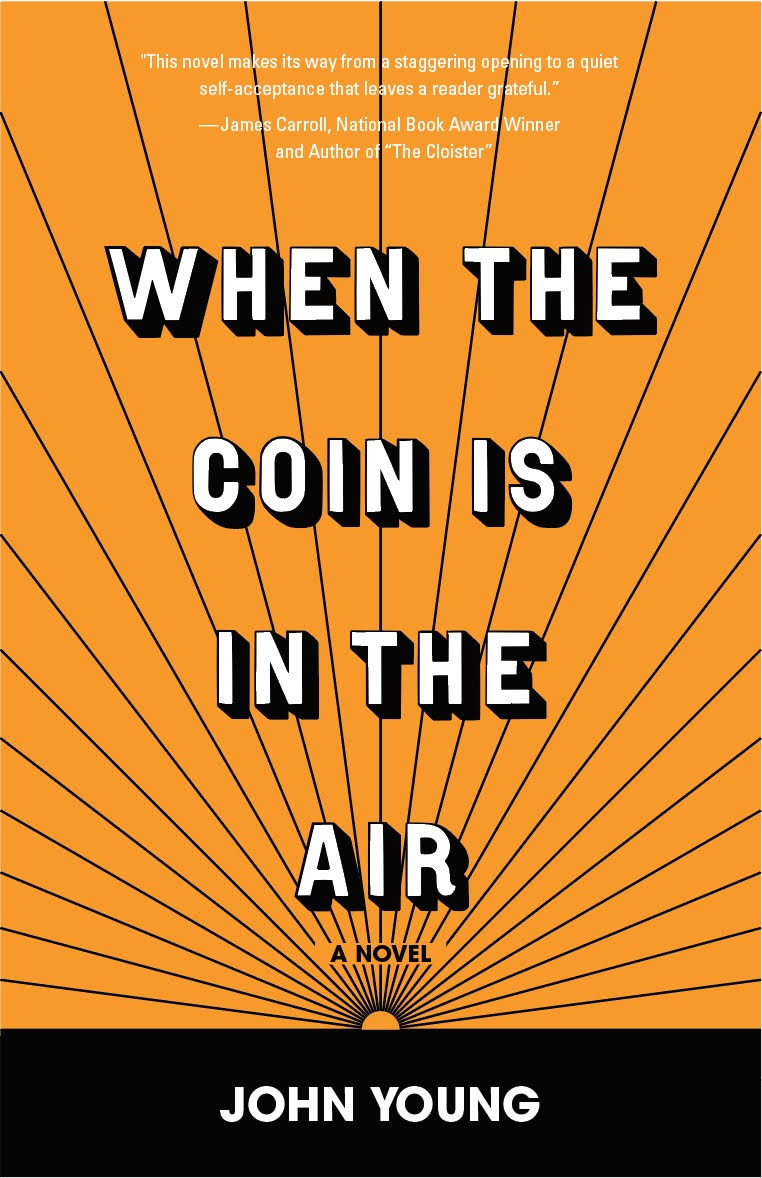Visiting memories of one’s youth is bound to bring despair. Marcel Proust’s “Swann’s Way”, the first part of his huge novel “In Search of Lost Time,” comes to mind. So does Thomas Wolfe’s “You Can’t Go Home Again.”
And, now, so does Indiana University grad John Young’s “When the Coin Is in the Air.”
Young’s is a semi-autobiographical account of Jason Blake, a country boy from a lower-middle-income farm family near Indianapolis.
“I first wrote the book as a memoir,” Young said in a video chat interview. What had taken him two painful (at times) years to write, took another two after he decided to change it from truth to fiction. But many similarities exist between his protagonist and himself.
They both went to IU. They taught at Indy’s Cathedral High School. They played football in school and wrote award-winning ad copy professionally.
And they had fathers who tried to murder them.
“Every night, I continued to sleep on the couch and propped chairs under the front and back doors to slow my father down if he tried to break in,” Jason says.
Young and Jason have so much in common, one wonders why Young bothered with those two extra years to change his true story — narrative nonfiction — into fiction. For one thing, Young said the genre gave him freedom to amplify events.
“I was able to show drama in a tighter format,” he said.
So, Young’s three siblings become Jason’s one older brother, Walter. Young’s two sisters may be out of the plot, but the fierce competition — and sometimes resentment — remain between the brothers.
Jason says, “Younger brothers spend a lifetime comparing themselves to their older siblings.”

In addition, fiction allows the writer to compress time and add things where a certain action might be necessary to develop a character. Young, who never worked as a bouncer, created that job for Jason, after Young talked to a friend who had been a bouncer in a rough Boston bar. Secrets Jason learns from having to expel rowdies during drunken knife-fights come in handy for him during the novel’s climax.
“I came to IU as a knucklehead,” Young said. His closest friends were smart he said. They enjoyed lives full of literature and discussion at the Collins Living-Learning Center, on Woodlawn Ave. Later, earning his MFA at Emerson College, Young remembers a professor telling him, “Don’t let the facts get in the way of the truth.” In other words, Young explained, look for the greater truth in something. For instance, in real life, Young and his older brother, David, each experienced similar vehicular accidents. The truth revealed, he said, is how both men behaved during their recoveries, not the accidents themselves.
“Sense of place is very important to me,” Young said. Place, here, refers to a geographical space imbued with meaning. To read this novel is to walk down the halls of Cathedral High School, to sip a beer in Indy’s Broad Ripple Village, to feel the stickiness of salt air on a Cape Cod beach.
It is also to feel exhaustion at Jason’s burdensome class schedule, and to love his mother, April Blake. It is also to feel one’s heart thud at Jason’s father hiding in the dark with his blue eyes and his handguns. Jason can’t shake the memory of seeing his father mouth a sentence to him in the courtroom. Were these words “I love you” or “I’ll kill you”?
Young’s own life parallels Jason’s in many ways, but much, also, had to be changed for the novel. “Go after the hard thing,” Young said, referring to the thousands of hours reliving terrible memories to rework truth into fiction.
The book is about making hard decisions and sorting out what we really want. It’s about how we struggle through suffering to reach self worth. As he escaped the bonds of family to find his sense of self, Young, angry and pensive at one point, went a full year without a relationship (Jason has dozens of girlfriends throughout the plot). “When the Coin Is in the Air” reflects how Young learned to make decisions: what matters is how a person hopes the coin will land — as it flips through the air.
This is the kind of book the end of which saddens the reader. It’s not that the finale isn’t optimistic; rather, when I turned that last page, I missed Jason. Young brings his reader so close to his protagonist that one can feel Jason’s curly hair. We come to know Jason as we know a best friend. And it’s awful uttering that permanent, last-page good-by.
“Discoveries keep me going, ” Young said.
His second novel—”Getting Huge,” is set in Concord, Mass. and the fictional town of Worthington, NH. It is about psychological displacement and the world’s tallest minister, who becomes obsessed with growing the world’s largest pumpkin as well as with the lovely next door neighbor — and deacon’s wife. Young is also working on a third novel.
Find Young at https://johnyoungwriter.com/.

